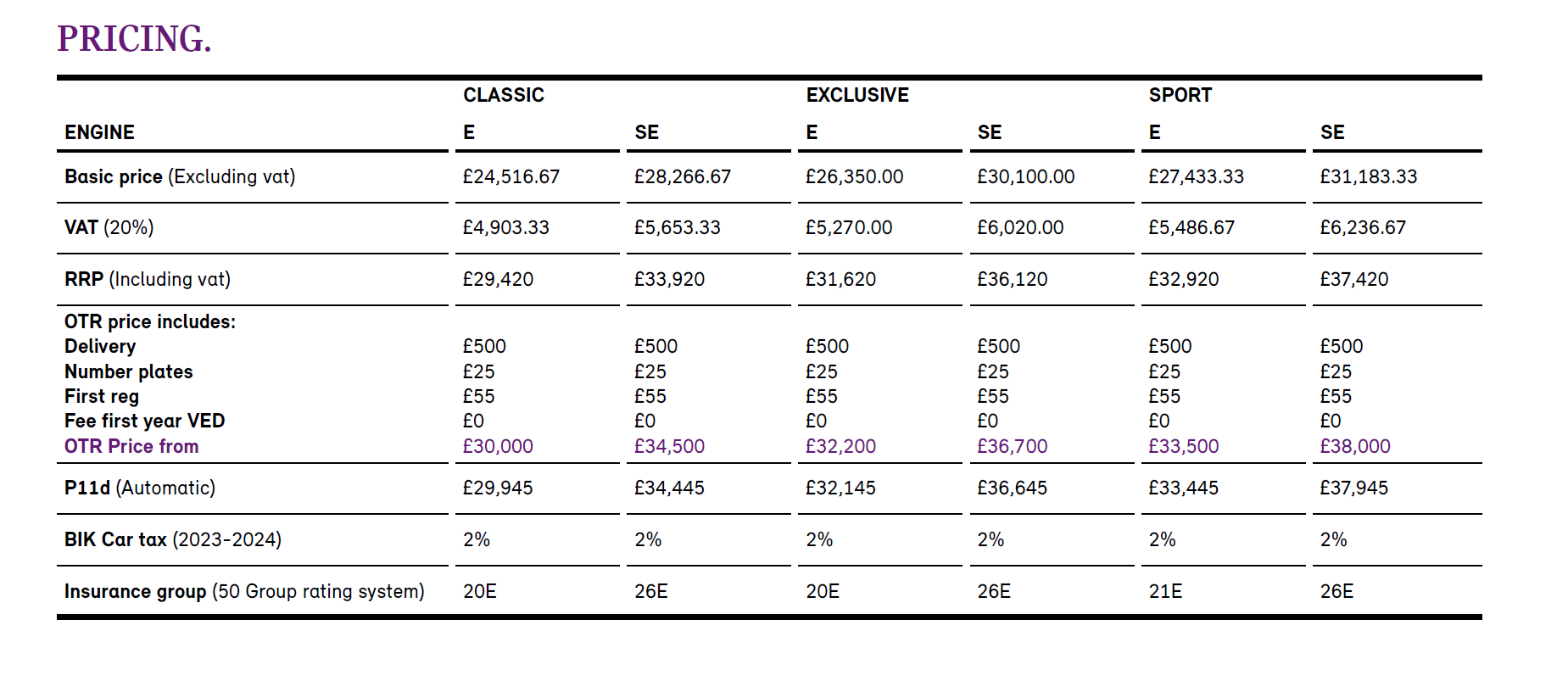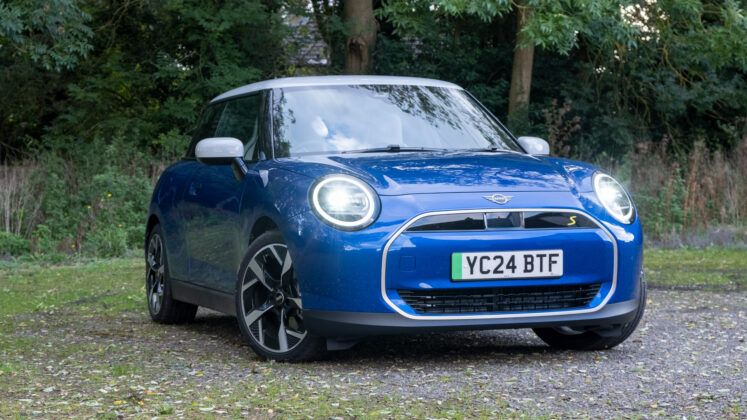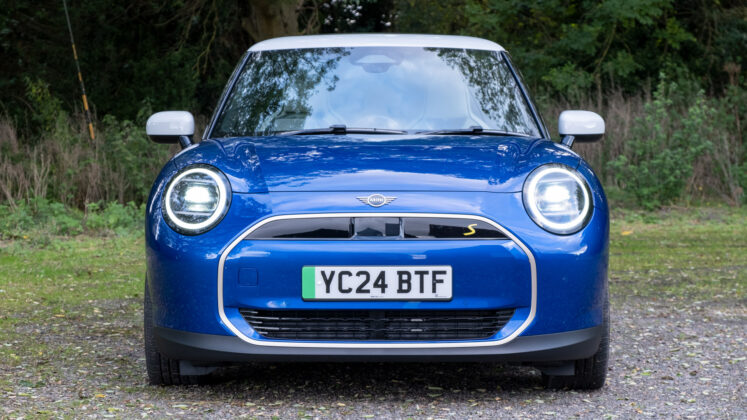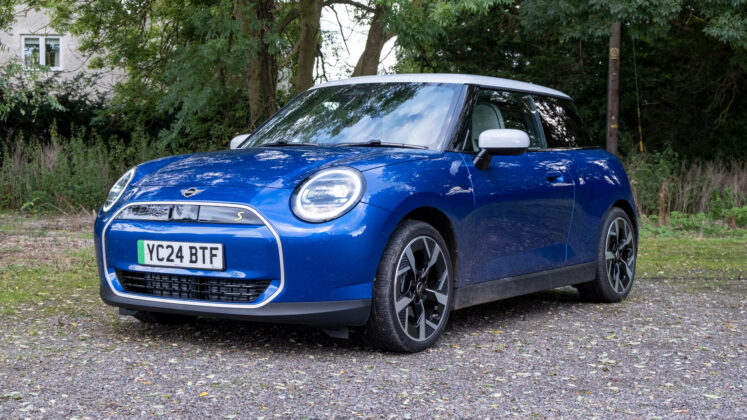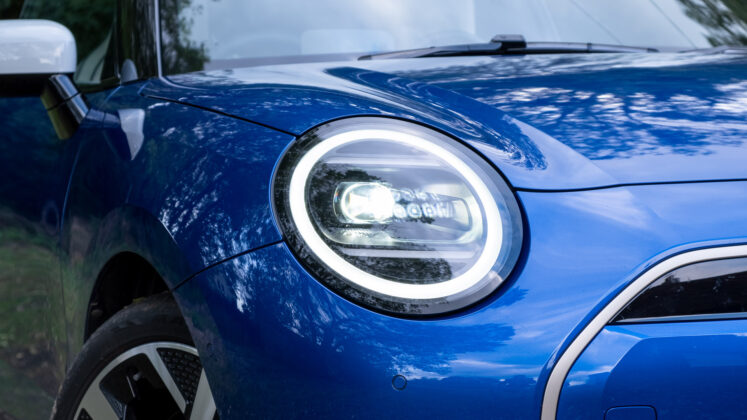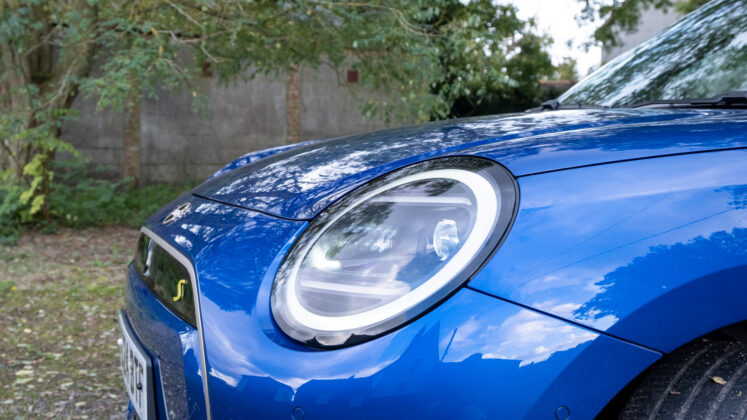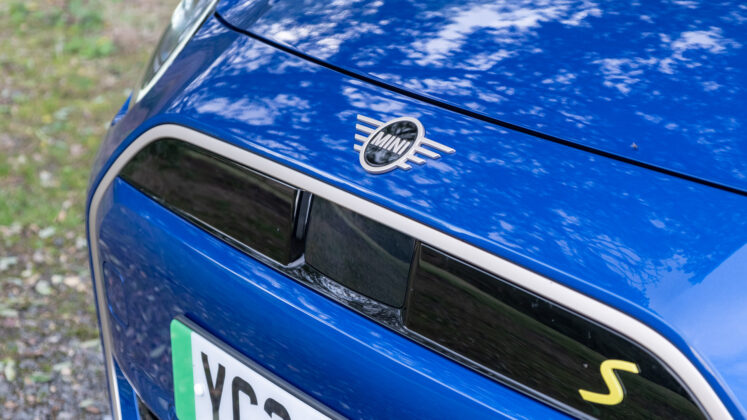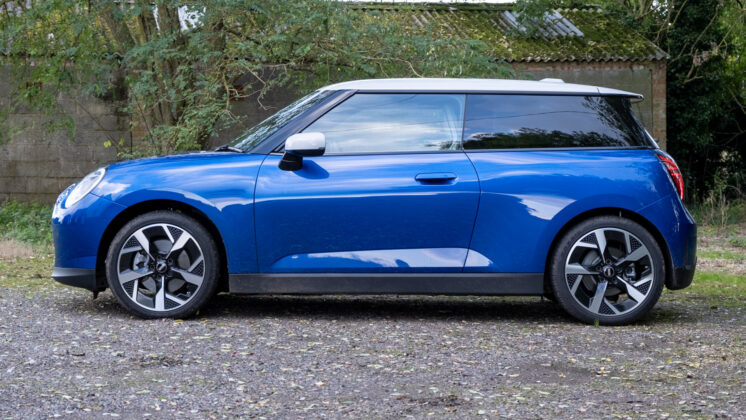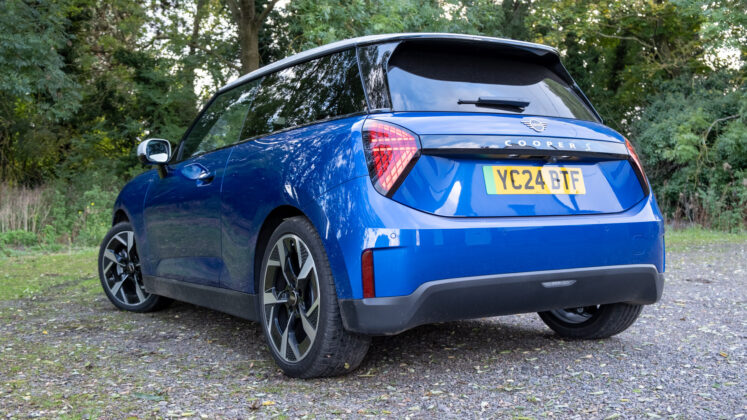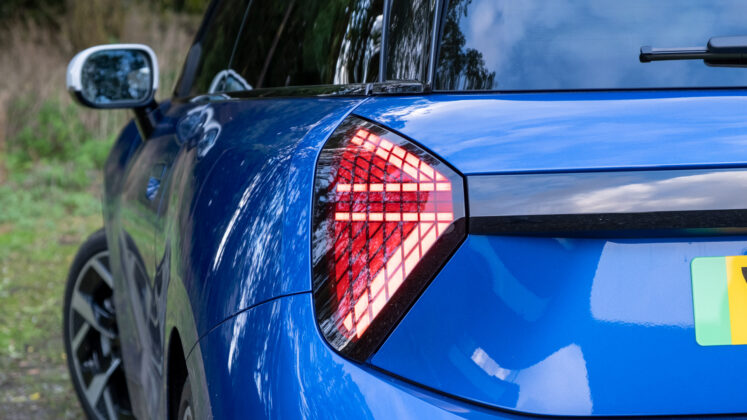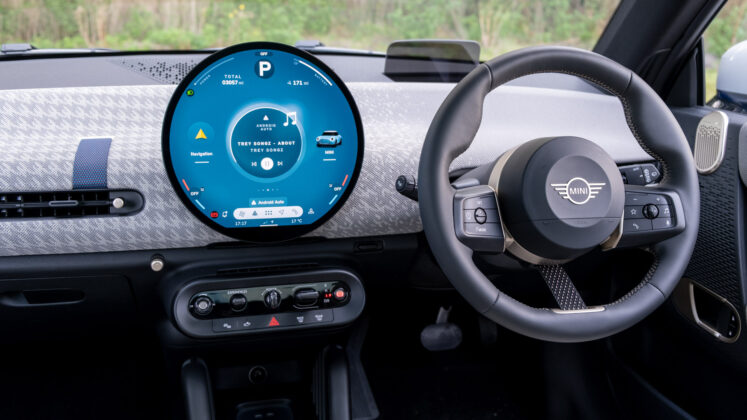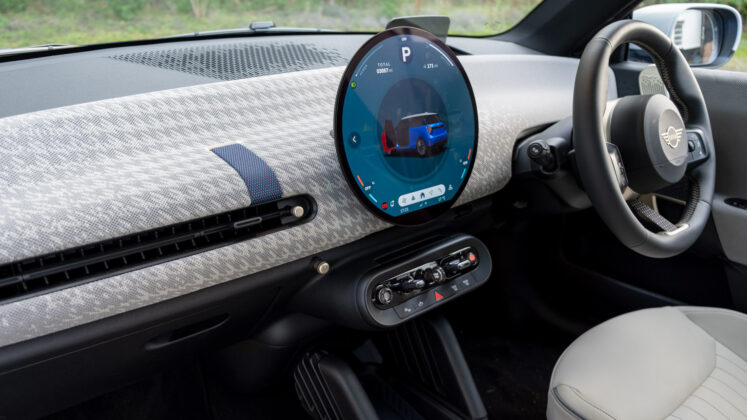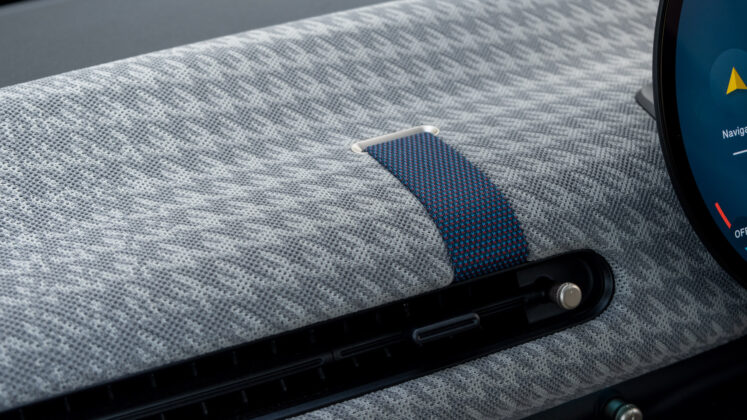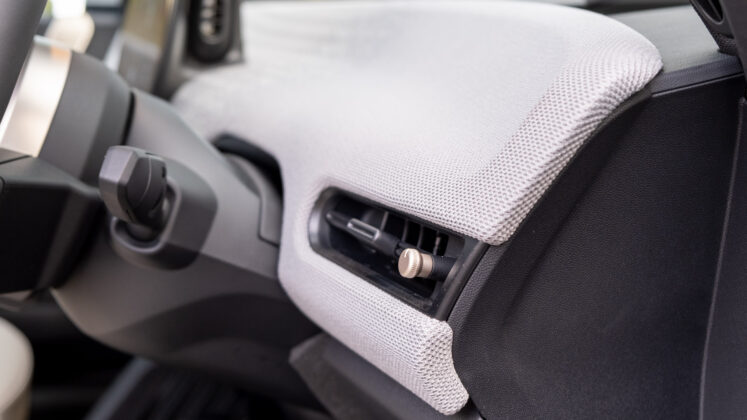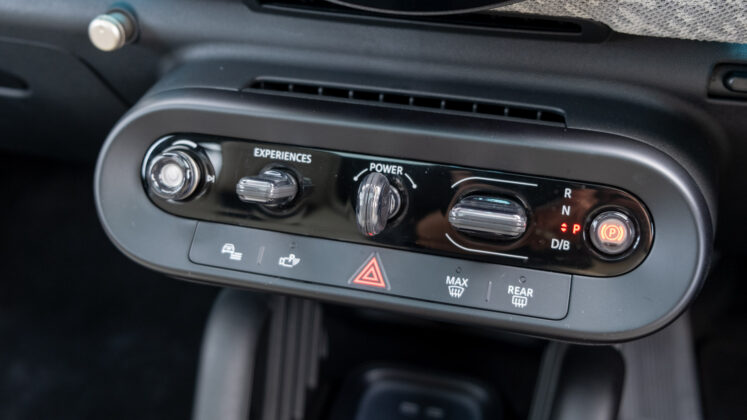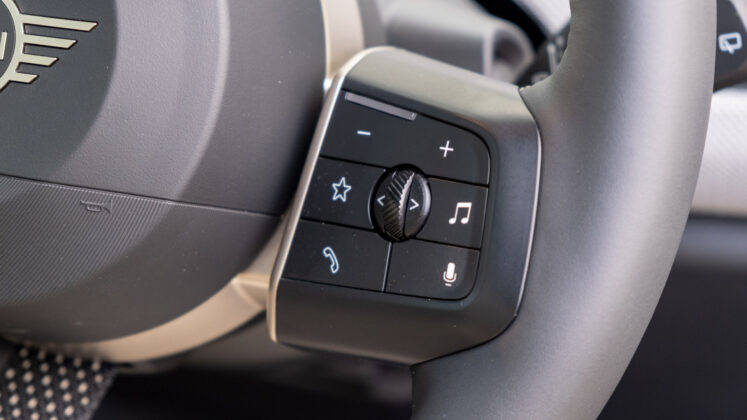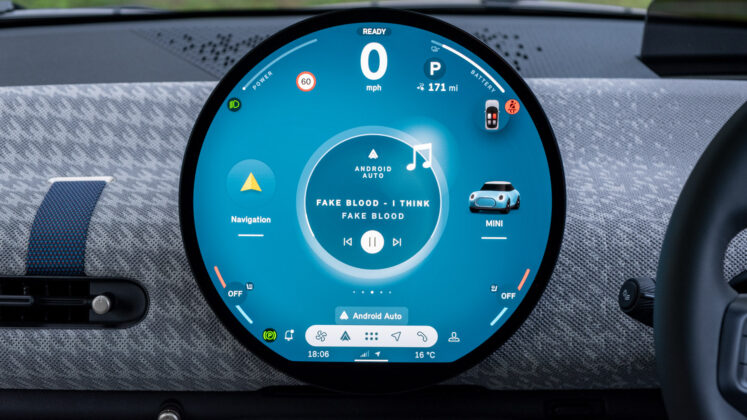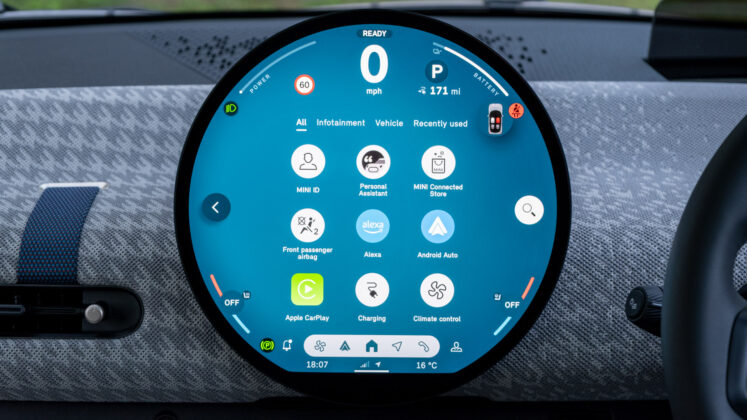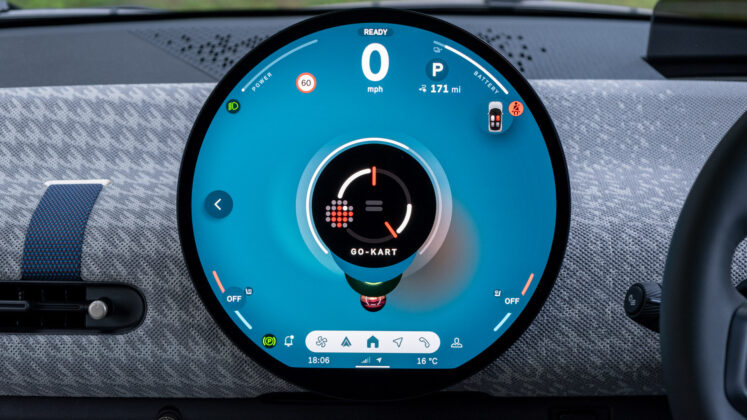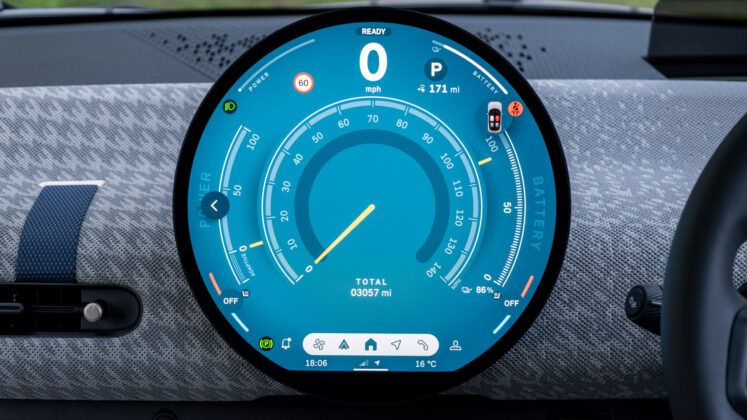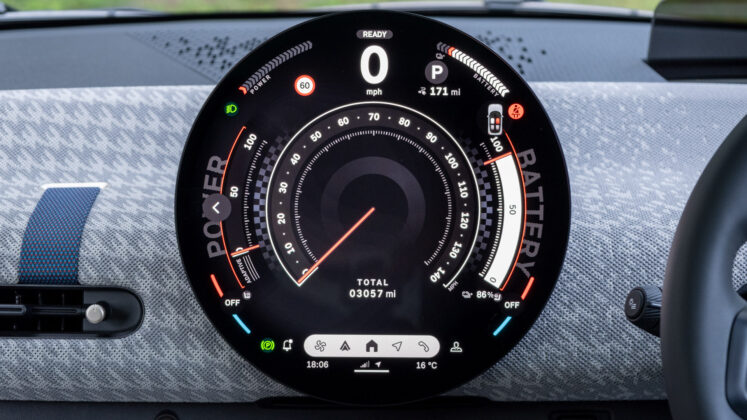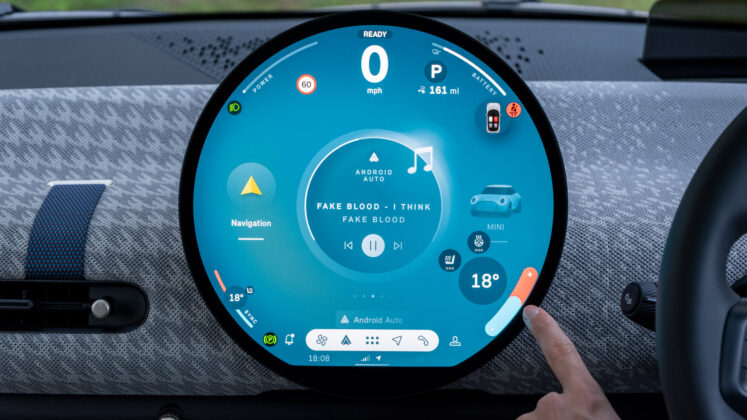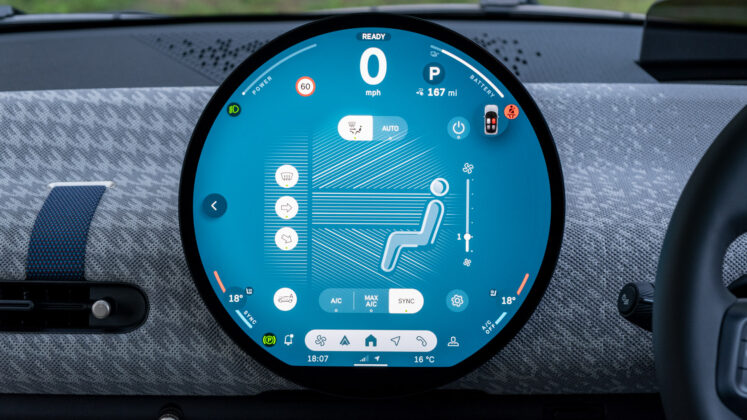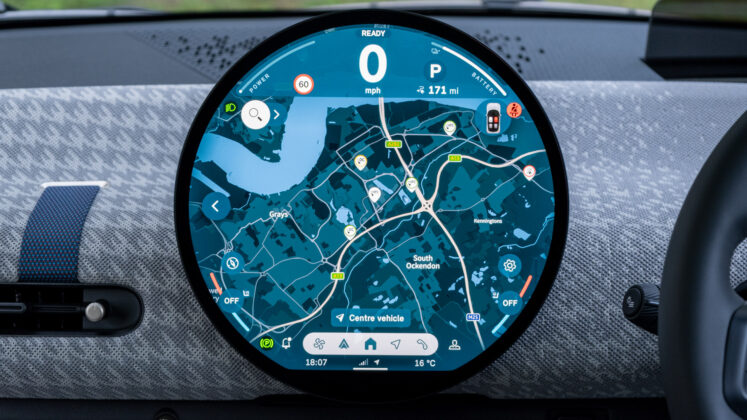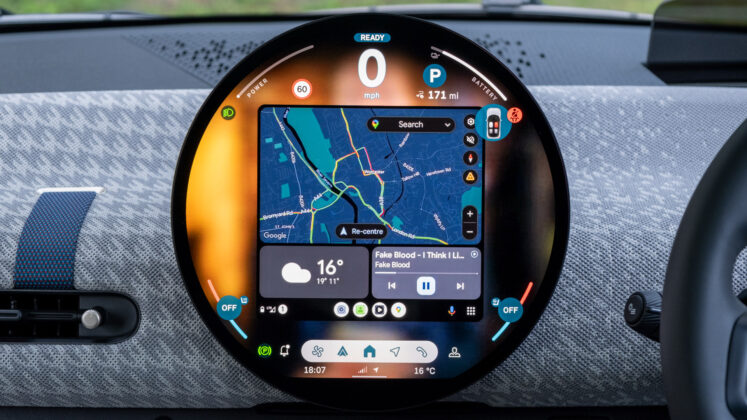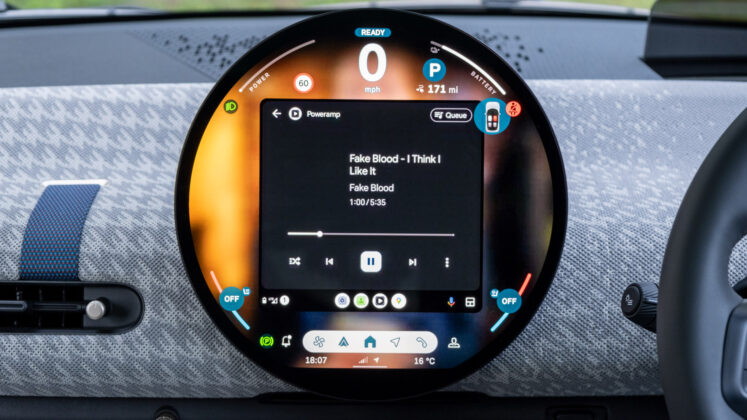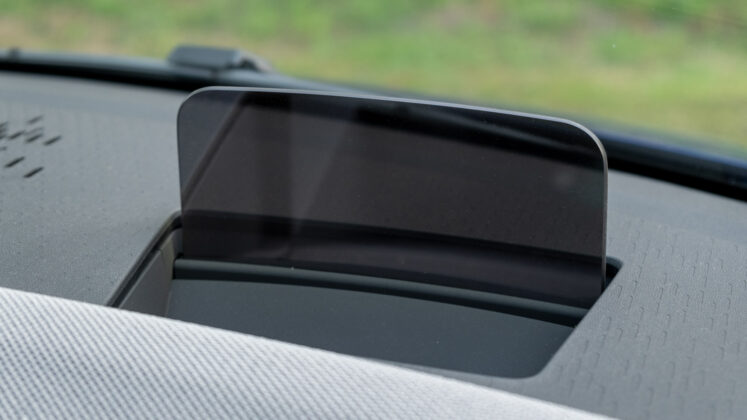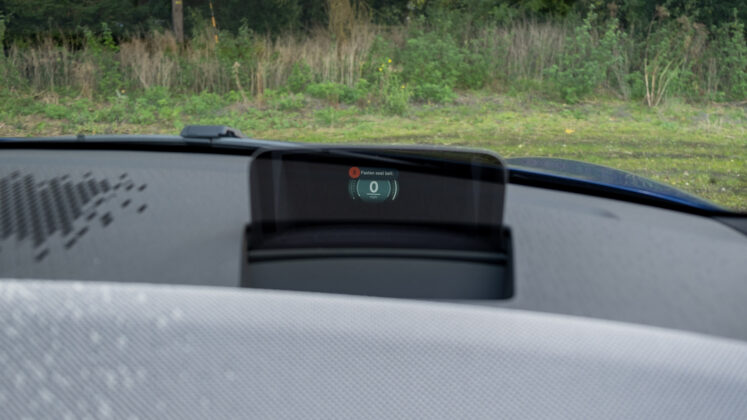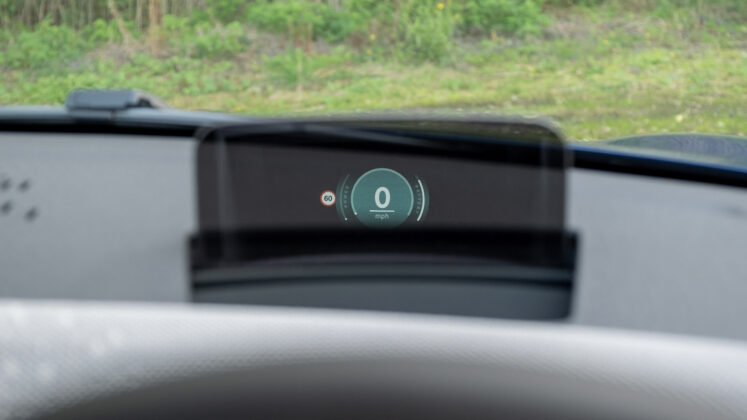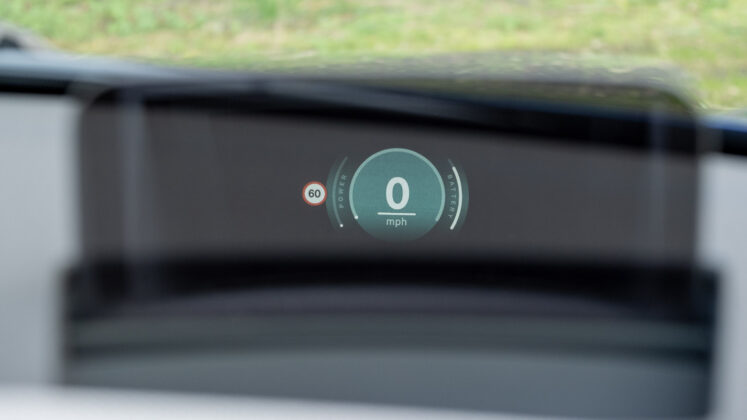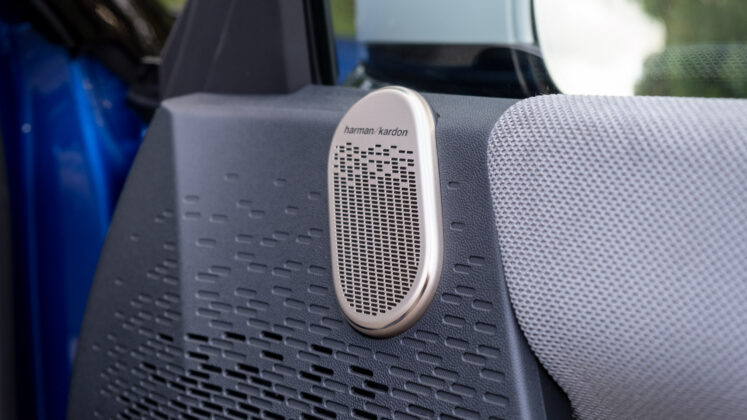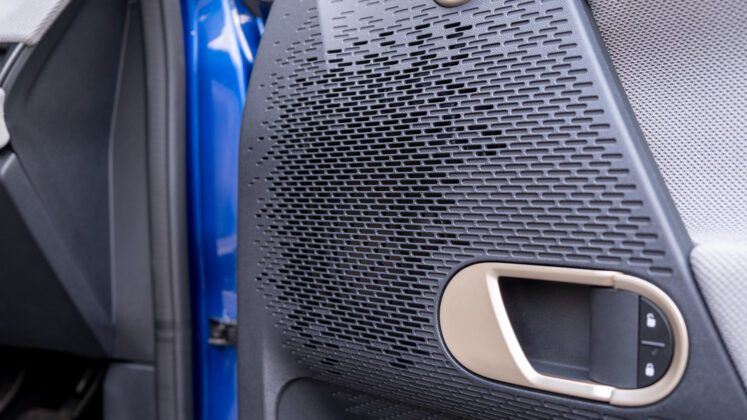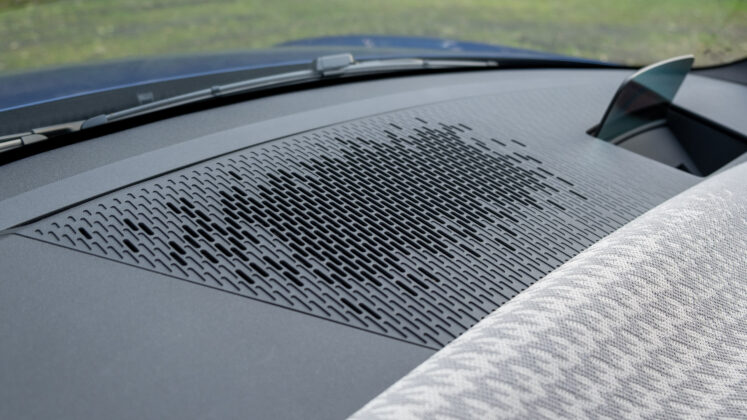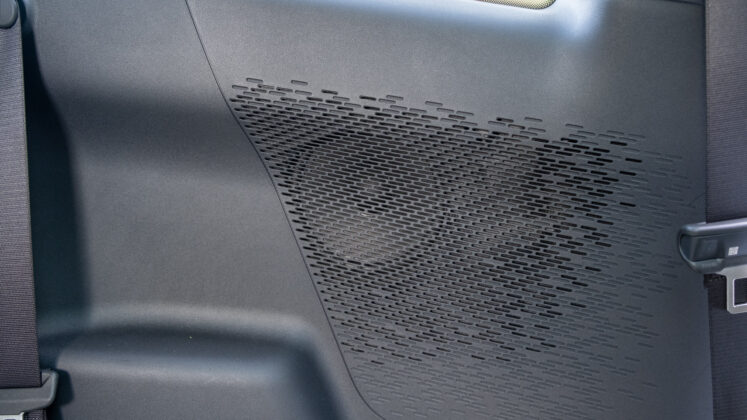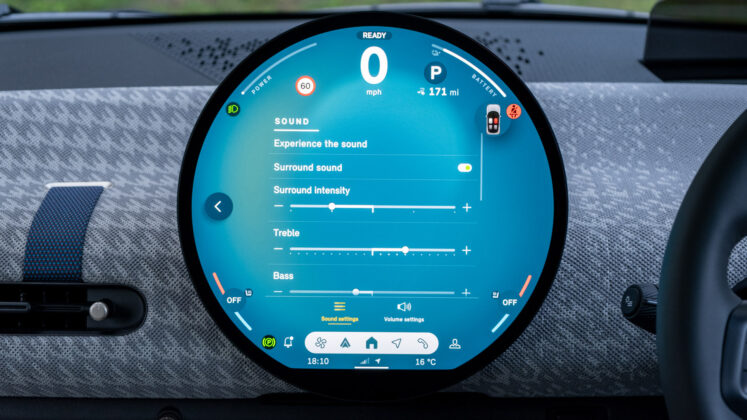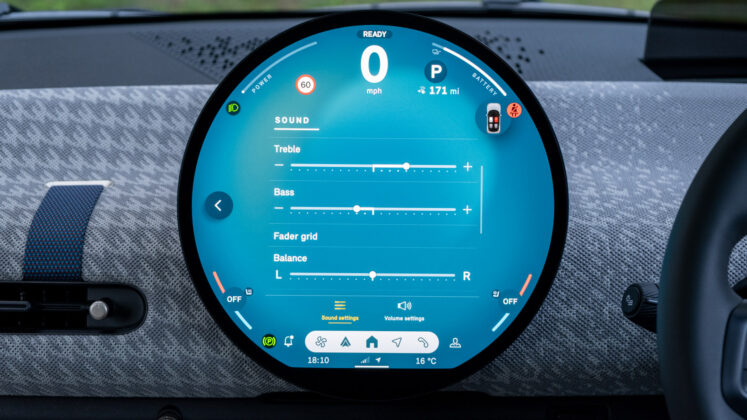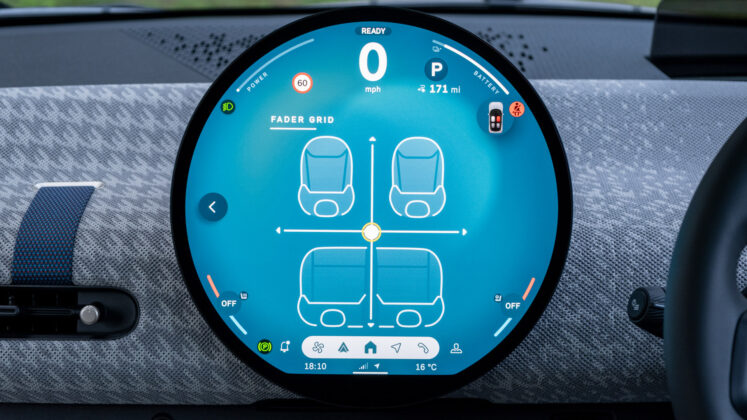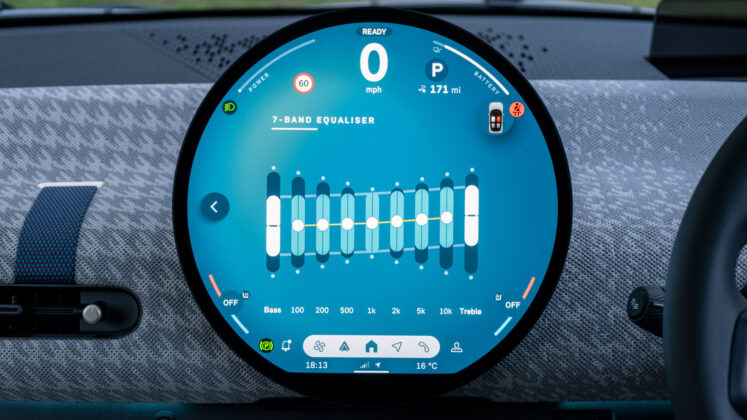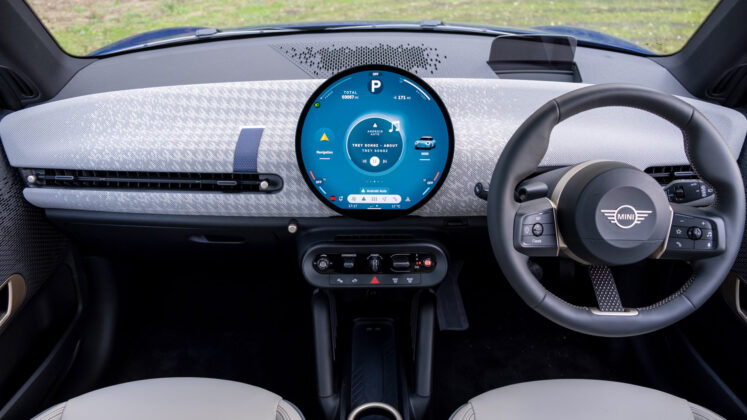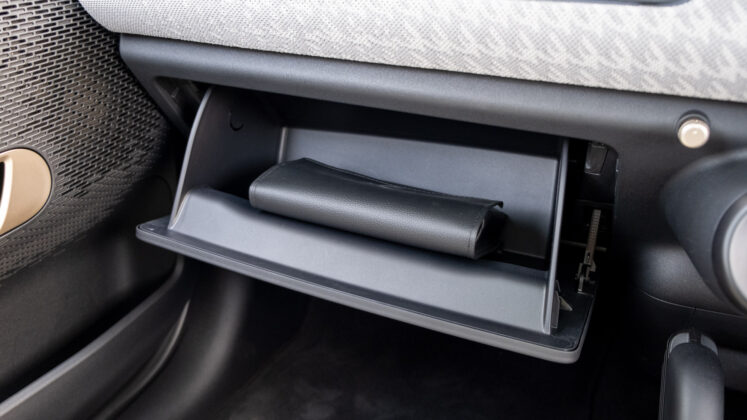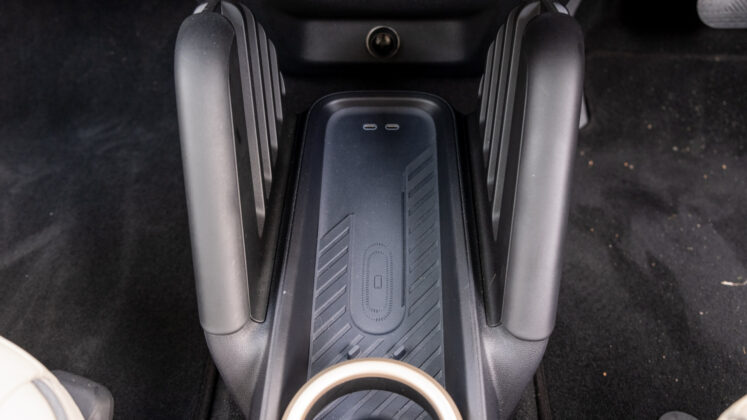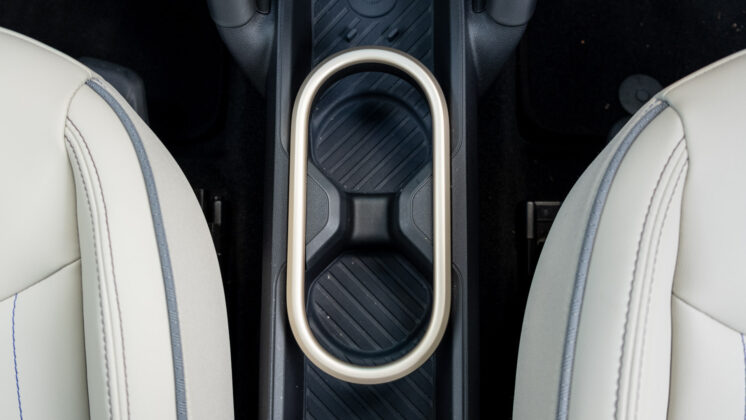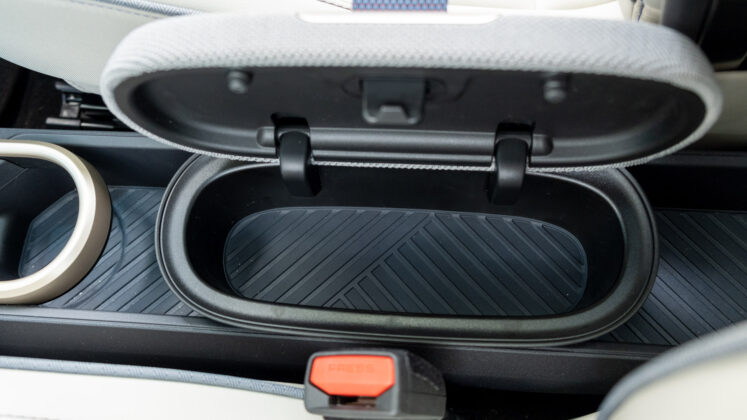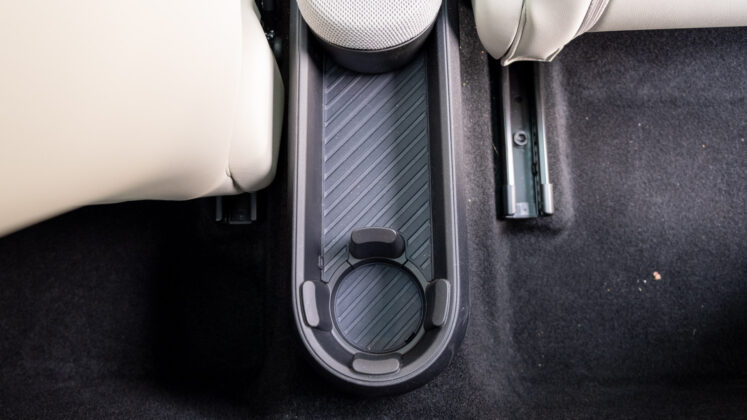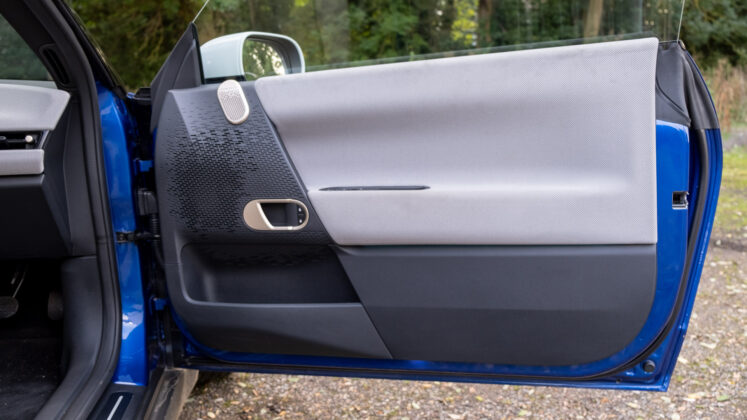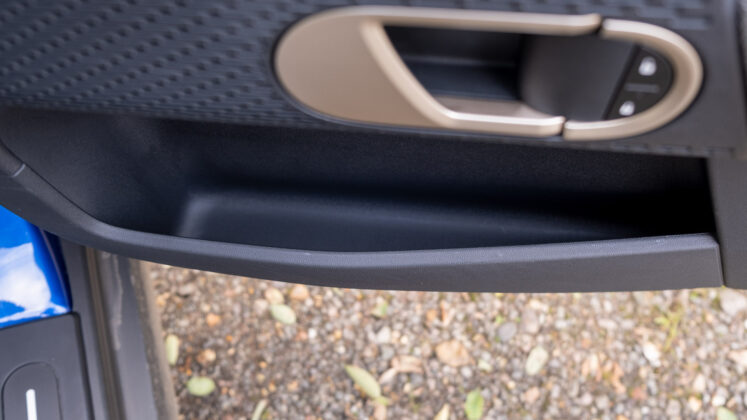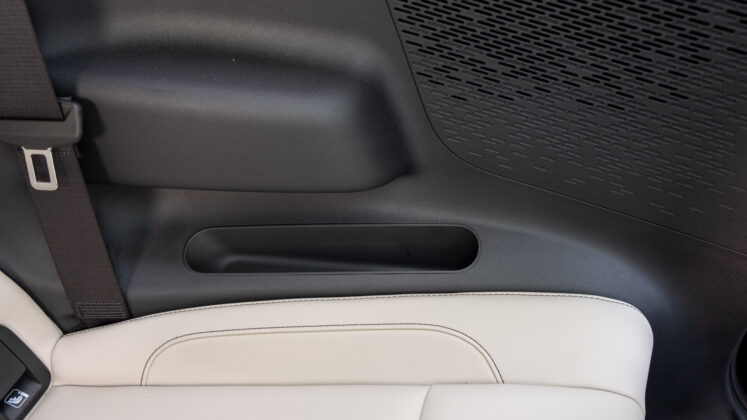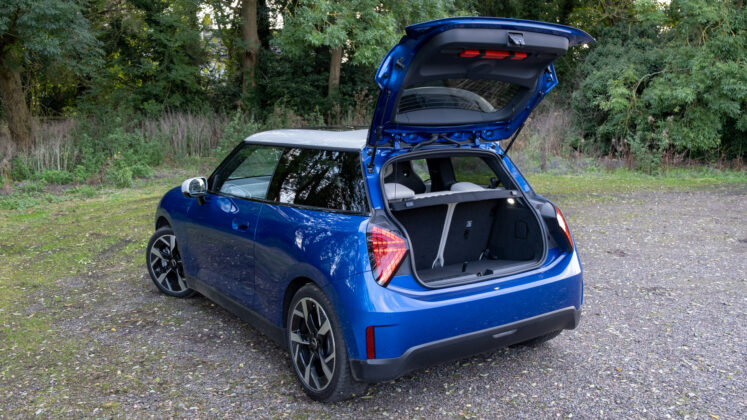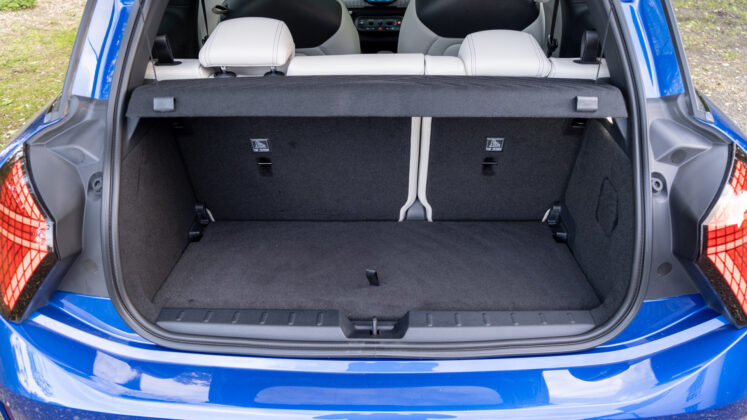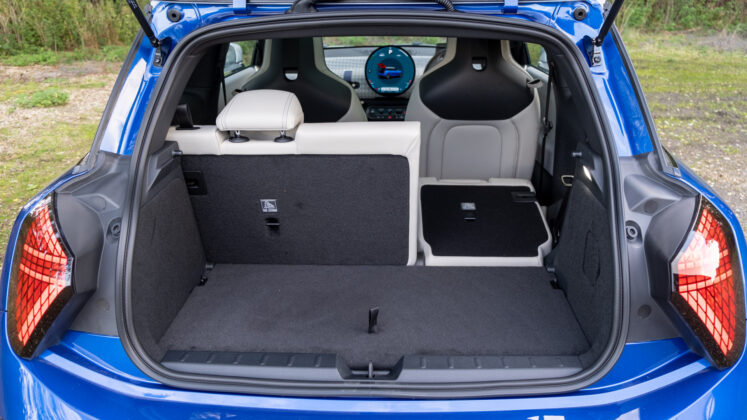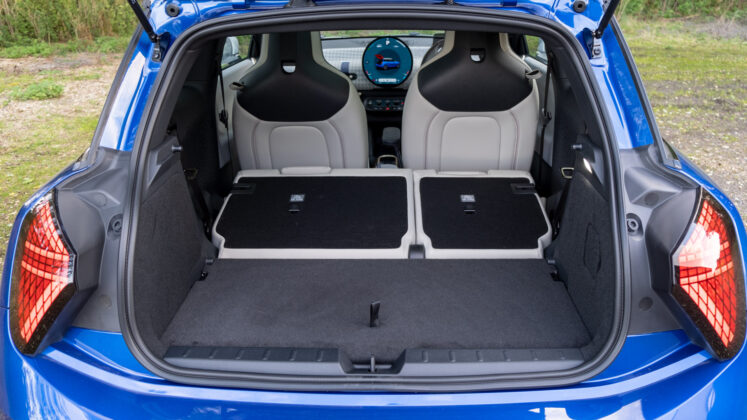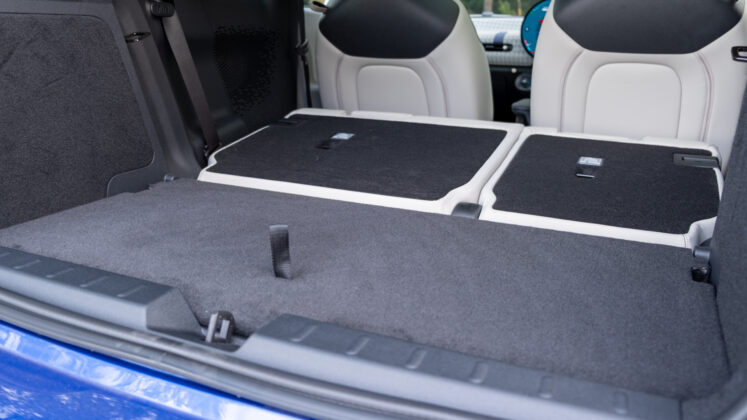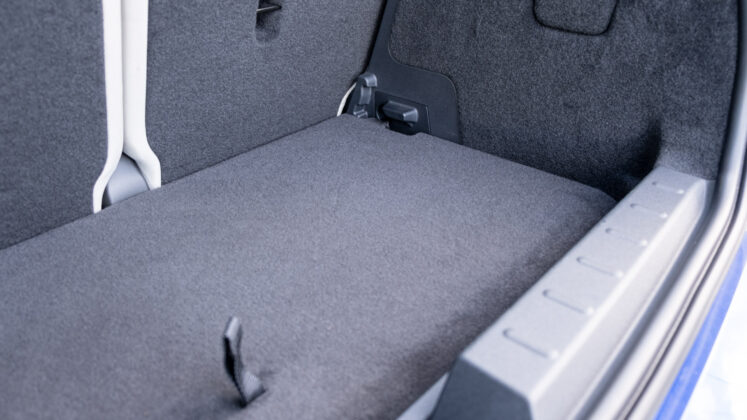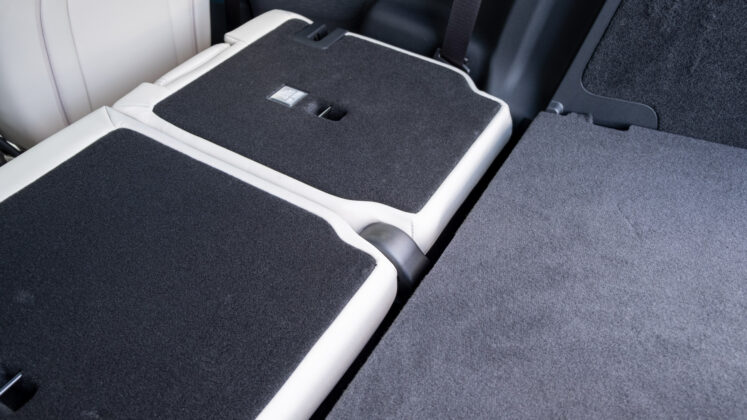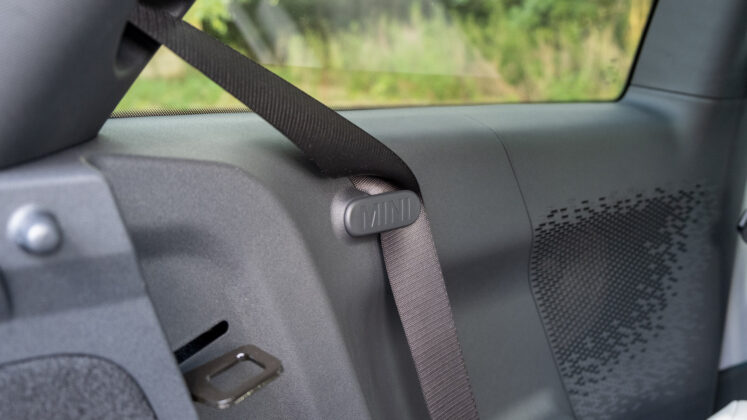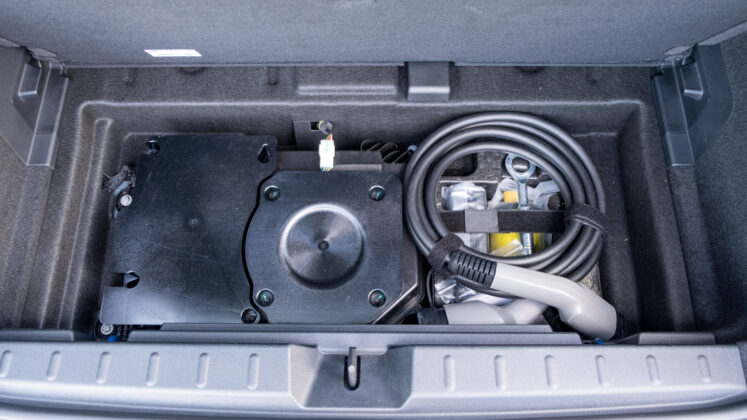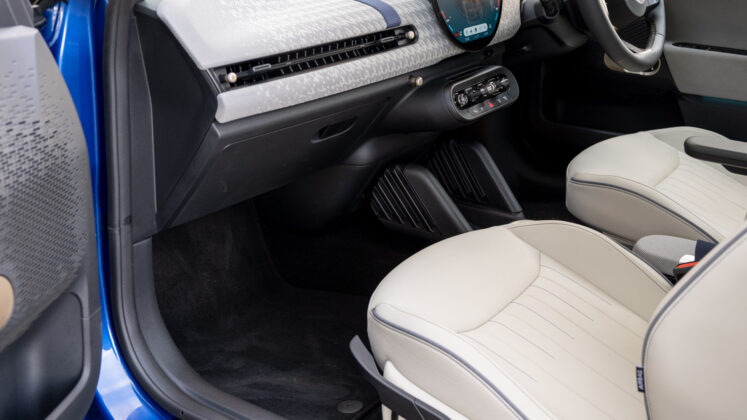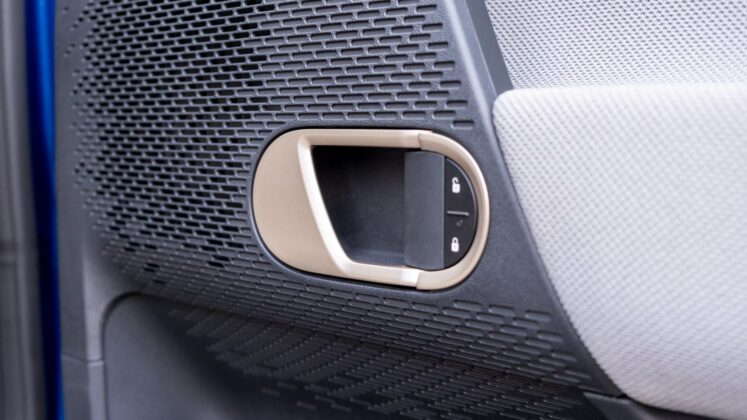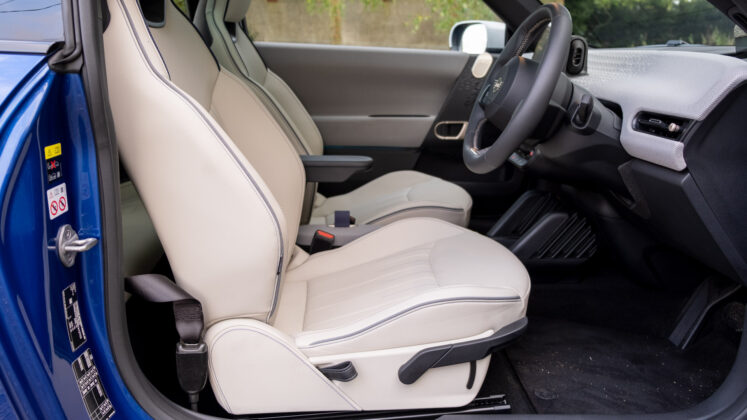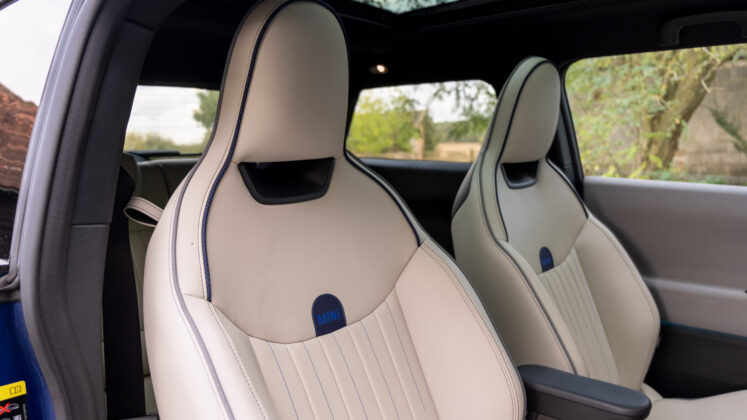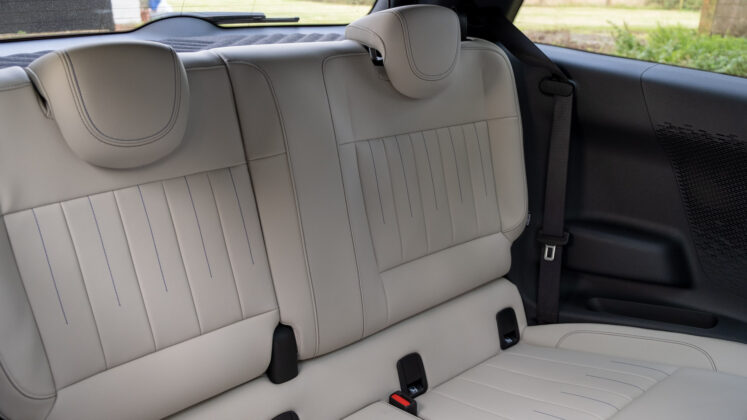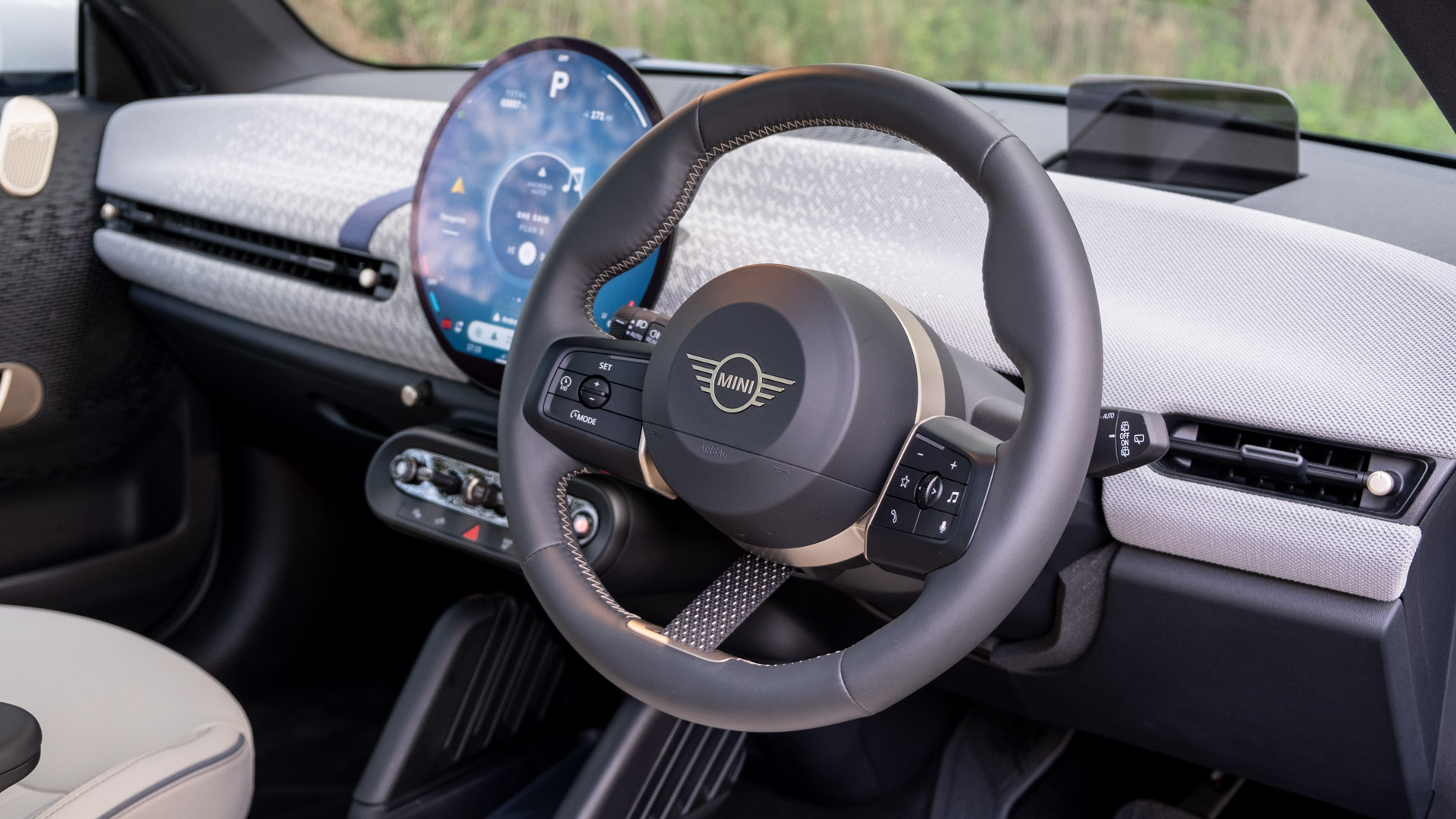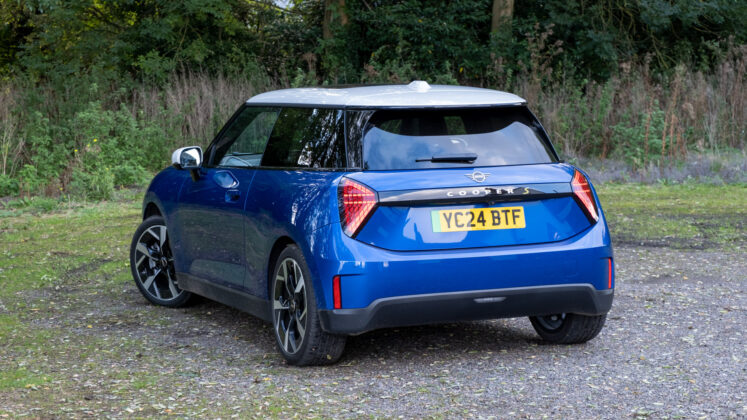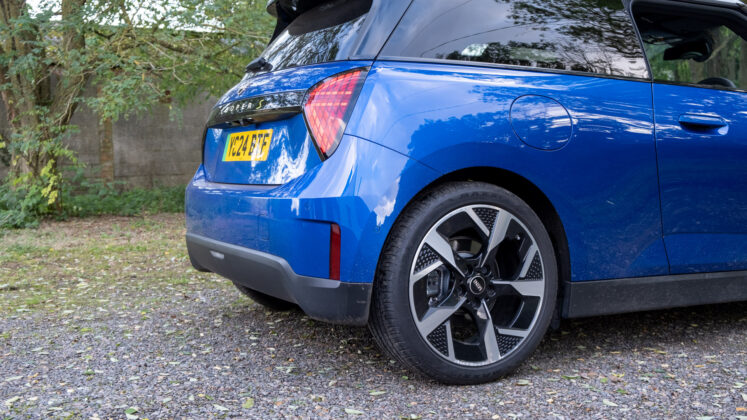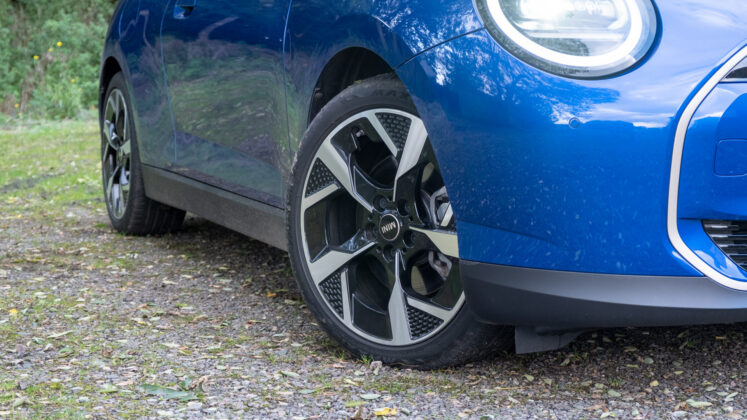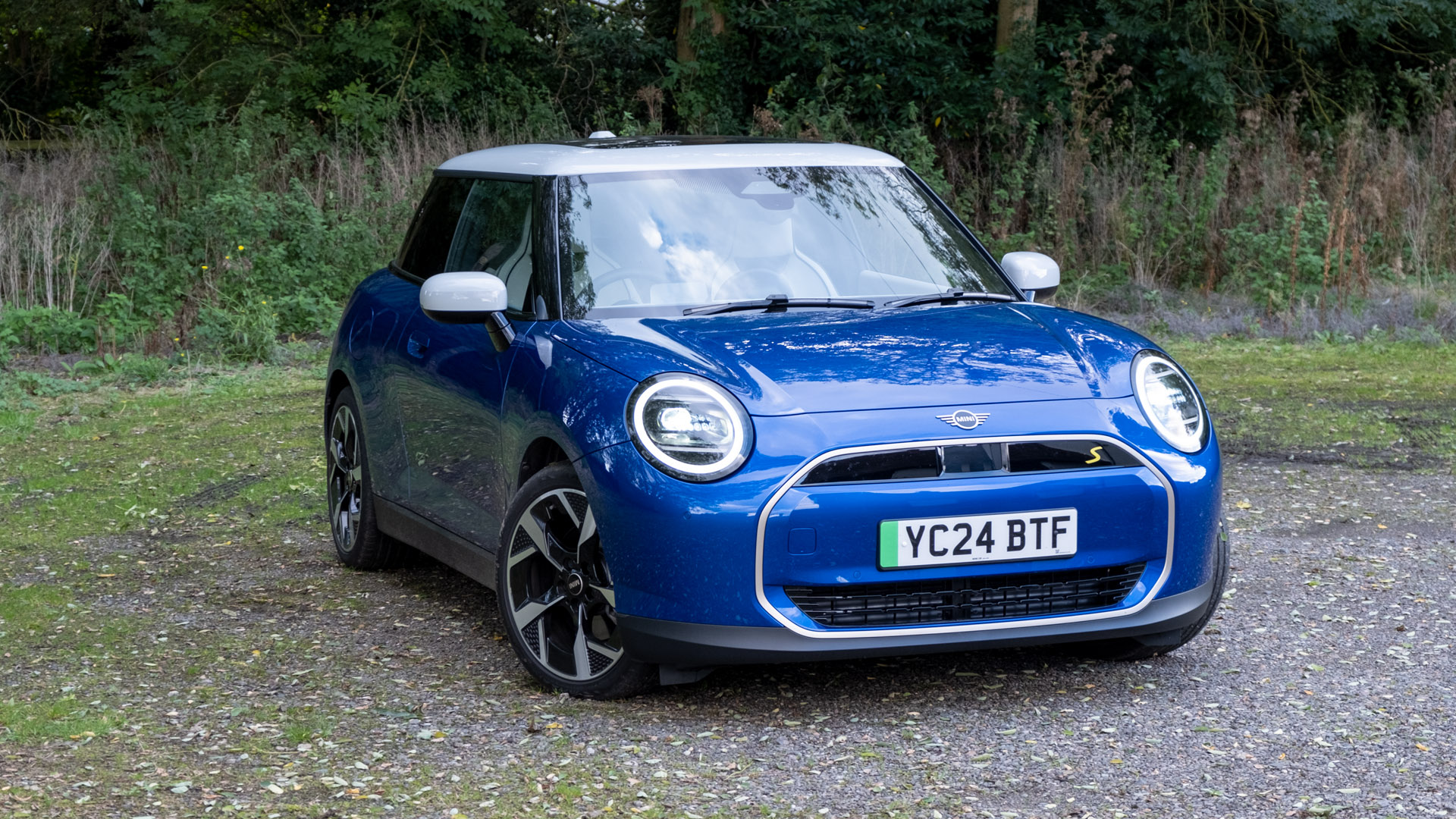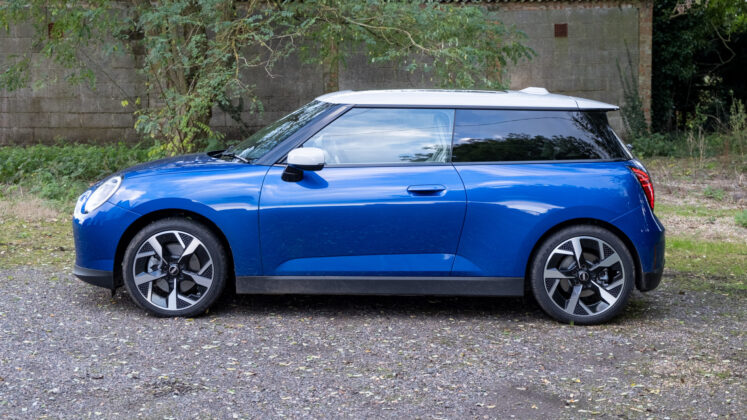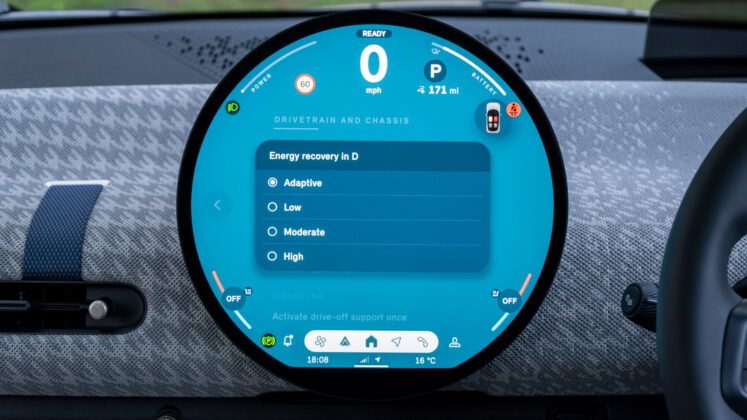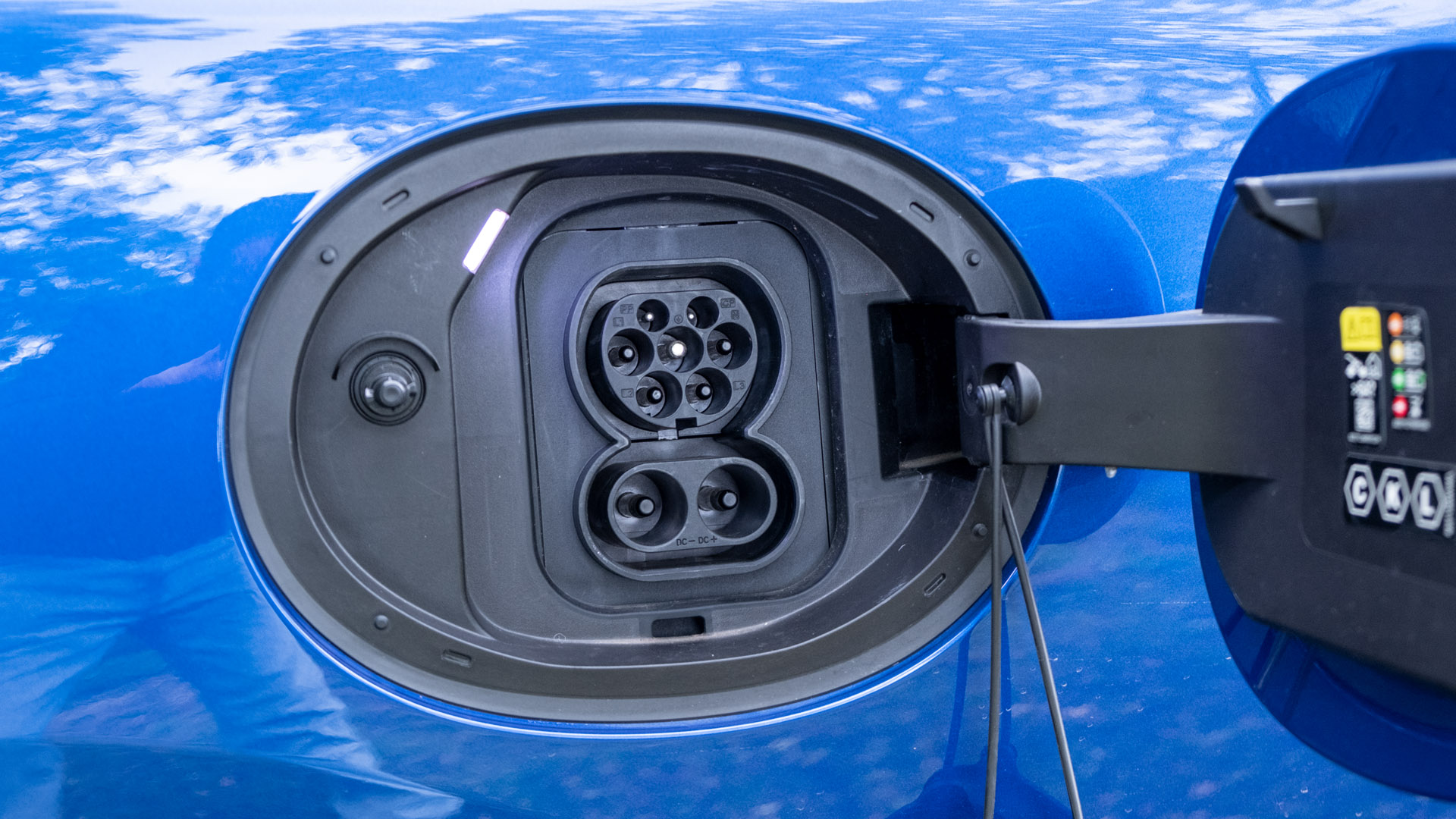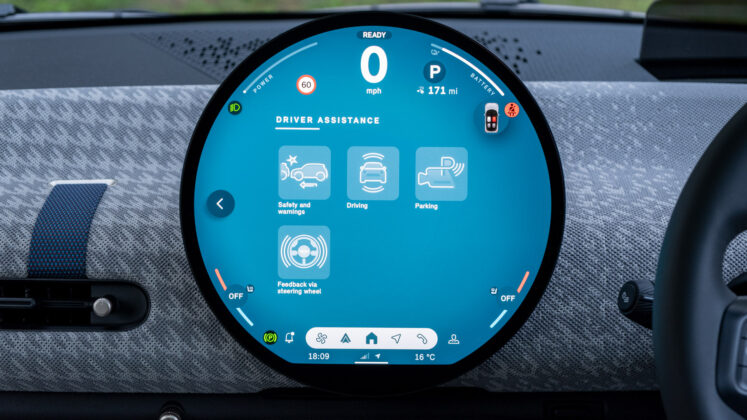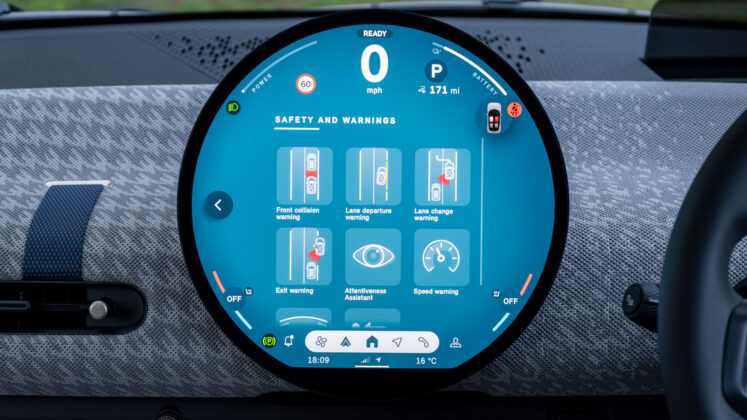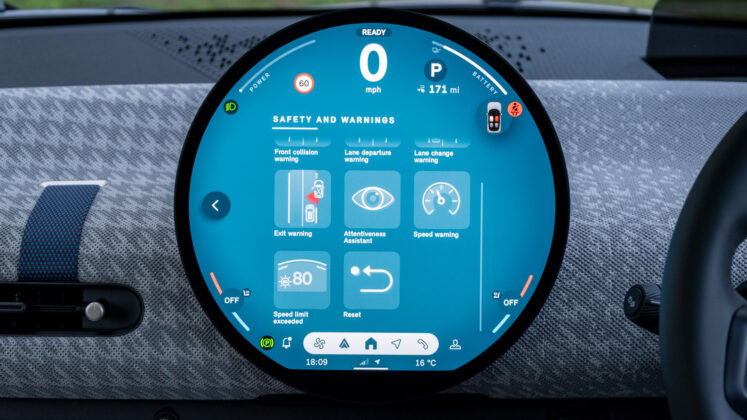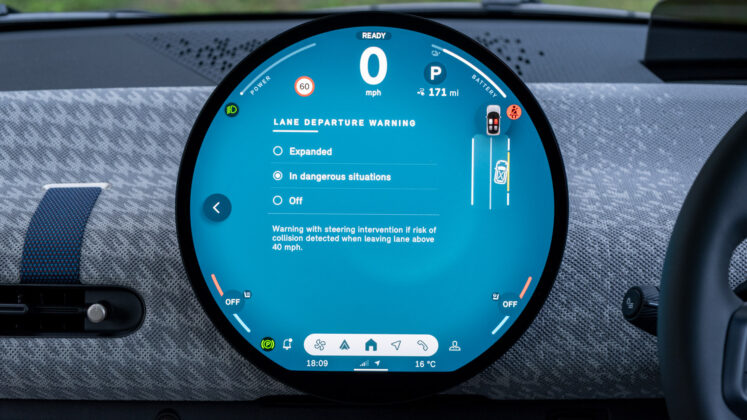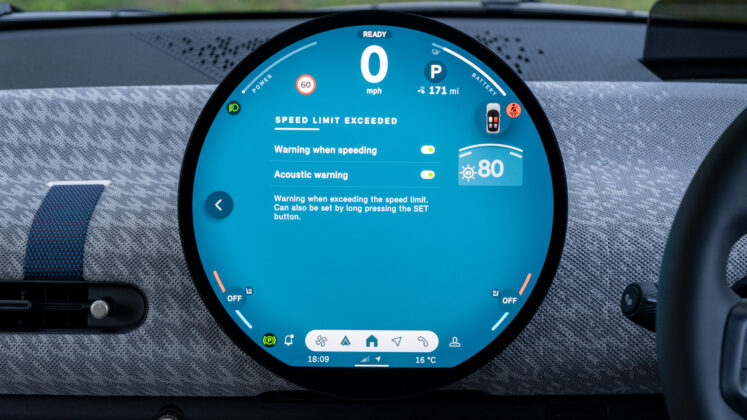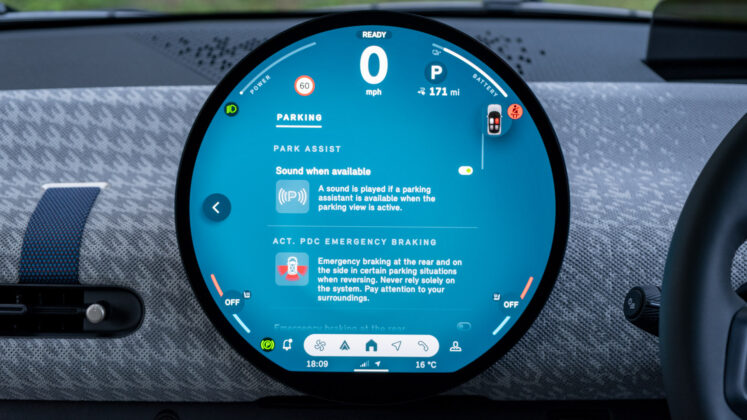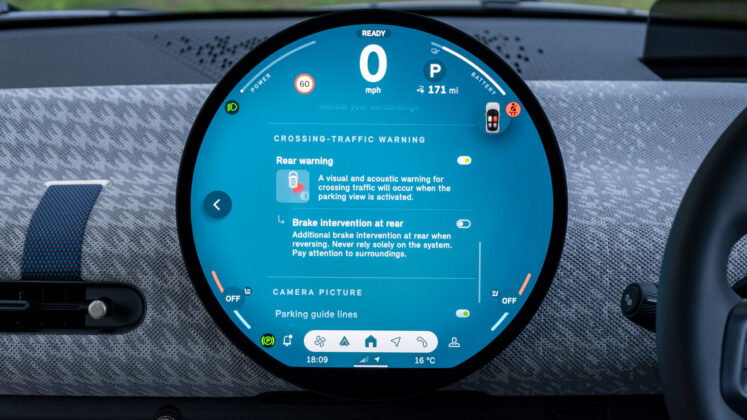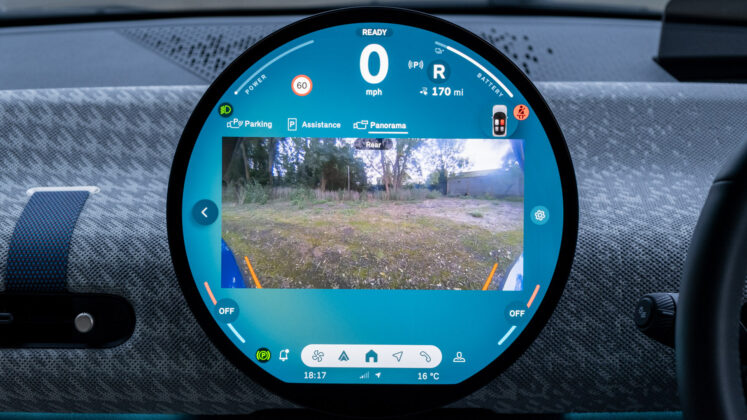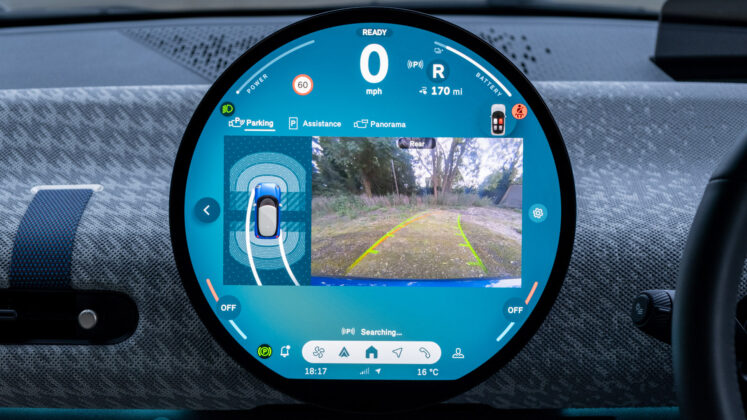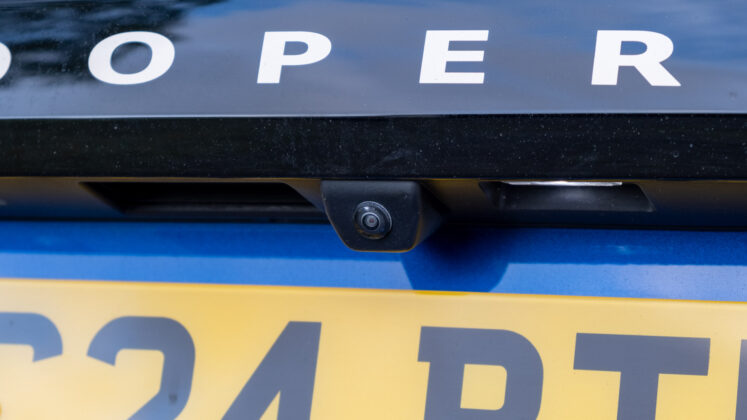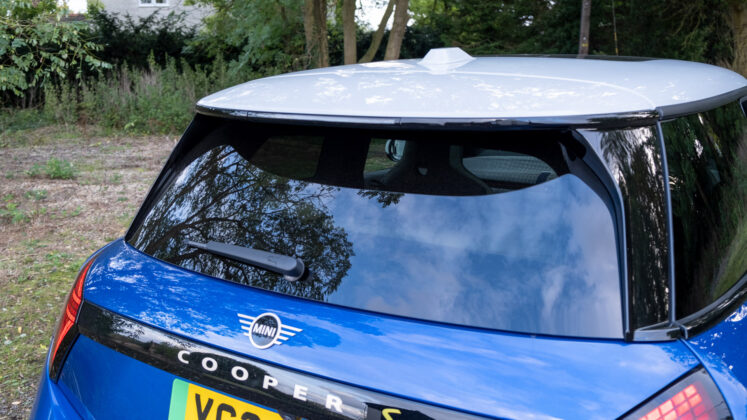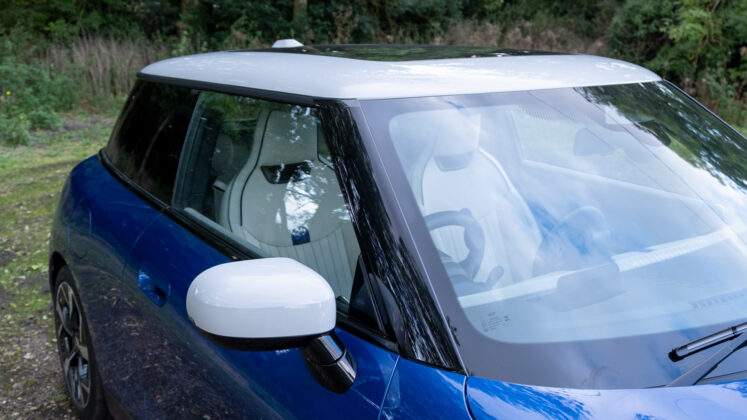The Mini Electric has been around since 2019 but now in its fourth generation, it’s received a complete makeover and a larger battery pack, which provides a better electric range. When we reviewed the original fully electric model in 2020, we found it to lack substance over rival alternatives.
The new Cooper Electric (also known by its model code J01) is the result of a partnership between the BMW Group and Great Wall Motor, a Chinese automaker responsible for numerous vehicles, including the GWM Ora 03.
If you’d prefer to watch a review of the new Mini Cooper Electric, head on over to our YouTube channel.
Mini Cooper Electric price & competition
At the time of writing and in the UK, the Mini Cooper Electric is available in two battery pack configurations, the E and SE, while each has three trim levels to choose from, Classic, Exclusive and Sport. Prices start from £30,000 and rise up to £38,000 without options – a breakdown can be found below (click to expand):
Find the best Mini Cooper Electric deals
In terms of the alternatives, there are a few hatchbacks and saloons to consider: the Fiat 500 Electric from £24,995; BYD Dolphin from £26,195; MG4 EV from £26,995; Peugeot e-208 from £28,200; Nissan Leaf from £28,495; Smart #1 from £31,950; GWM Ora 03 from £31,995; Fiat 600e from £32,995; Vauxhall Corsa-e from £33,730; MG4 EV XPower from £36,495; Cupra Born from £35,495; VW ID.3 from £37,700; Peugeot e-308 from £38,550; Tesla Model 3 from £39,990; Polestar 2 from £44,950; BYD Seal from £45,695; Hyundai Ioniq 6 from £47,040; BMW i4 from £51,270.
Read next: MG4 EV review: The best value EV to date
Mini Cooper Electric exterior review
One of the most obvious changes from its predecessor is the exterior design. Some people hate it as it reminds them of “yet another Chinese copy”, while here at TotallyEV we prefer its looks. It’s sleeker with softer curves, retains that iconic silhouette, and yet from the back has a somewhat chunky and robust look, which reminds us of the original Morris Mini Minor from 1959.
In terms of paint finishes, ‘Melting Silver III’ is fitted as standard on the Classic trim, ‘British Racing Green IV’ in the Exclusive and ‘Chili Red II’ in the Sport. Other colour options in all trims are available for £550.
A difference in trims also determines which alloys you get. 16″ in the Classic with 17″ available as a £550 option, 17″ in the Exclusive with 18″ available for £550, and 18″ fitted as standard in the Sport trim. Pictured are the optional 18″ Slide Spoke 2-tone fitted on the Exclusive SE.
Reax next: Smart #1 review: The best new EV?
Mini Cooper Electric interior review
It’s not only the exterior of the vehicle that’s had a redesign, but the interior too. Mini has gone for a more minimalist look, similar to what Tesla has done with its vehicles. On the one hand, it looks clean and provides a sense of spaciousness, while on the other it’s impractical and misses key features.
The materials used within the cabin aren’t the best, it doesn’t scream quality everywhere you touch, with hard plastic present by the dashboard and the door trims; with that said, we can’t complain too much in this department, as a lot of its competitors at this price point are similar in their approach to quality.
It’s good to see that physical buttons are still present on the steering wheel with traditional stalks and a flurry of toggles underneath the display. Unlike a lot of its rivals, all the physical buttons haven’t been eradicated from the cabin.
Speaking of which, almost all of your controls are done via the 24cm diagonal OLED display, which resides at the centre of the dashboard. Aesthetically it looks nice, as it’s similar to the older generation models that had a circular speedometer. However, the modern take from Mini has plenty of flaws.
Read next: Hyundai Ioniq 6 review: Better Than Tesla, BMW & Polestar?
The buttons for your climate controls are quite small, and therefore trying to access them while on the move is a real faff. Similarly, accessing certain menus can be challenging. After you get your head around the layout and settings, you’ll find the responsiveness of the OLED display is really poor. It’s sluggish to respond to swipe gestures, which are paramount in a touchscreen display; leading to a frustrating experience when you’re switching between apps and menus.
It’s also questionable as to why Mini has chosen to include an OLED display. It’s among one of the first in the automotive sector to include such a panel. OLEDs are great at providing deep contrast ratios and vibrant colours, however, have one major drawback that plagues their existence – burn-in. A phenomenon that occurs after the display is left on for a prolonged amount of time, and if certain icons are not periodically refreshed, it can lead to permanent damage. While this might not be a deal breaker for those watching TV or playing games on their PC monitors as there’s always motion, it is an issue when there are fixed icons on a car’s infotainment system. Given Mini hasn’t provided any means of mitigating the effect, it leads us to believe that in the long run, the Cooper Electric will suffer from permanent burn-in issues.
Buy a car phone mount on Amazon (Affiliate)
Aside from the questionable use of panel technology, both Android Auto and Apple CarPlay are also not optimised on a circular display. This leads to the third-party mobile operating systems having a letterbox-style design, which yet again highlights that it’s the design rather than the practicality that has been prioritised. On that note, we experienced intermittent issues with Android Auto with it sometimes momentarily cutting out. It is, however, good to see that both these systems are supported over a wired and wireless connection, and that they feed through turn-based navigation data to the Head-Up Display (HUD).
This brings us to the driver’s display, which is non-existent in the new Mini Cooper Electric. Indeed, the automaker has gone full Tesla in its aim to declutter the dashboard. To counter this, there’s a HUD fitted as standard in the SE trims and comprised as a £2,000 option in the cheaper E trims. Should you not opt for the SE or the Level 1 Pack, you’ll need to glance to the top centre of the circular display to check your speedometer. Very much like the Tesla Model 3, you have to take your eyes further off the road to check your traversing speed, which in our opinion is a safety concern. Also, as the speedometer is at the centre rather than in the corner like in the Tesla, it’s even harder to adjust your eyes back to the road.
Another thing we noticed, is that while the HUD is detailed and reads the infotainment system, it is angled away from the driver and off-centre, making it off-putting to look at. This is likely due to the design of the dashboard but is distracting when you’re sat in the driver’s seat. Yet again, practicality seems to have been a second thought.
When it comes to technology, we should highlight that there’s a six-speaker 100-Watt audio system that comes fitted as standard across the entire trim range. Should you want a punchy 10-speaker 315-Watt Harman Kardon system instead, you’ll need to splash out an additional £4,000 to find it comprised within the Level 2 Pack. You can find out if the upgrade is worth it by reading our dedicated audio review.
Mini Cooper Electric storage review
Storage, at least within the cabin isn’t too bad. At the front, you have the glove box, which has been optimised for right-hand drive vehicles, a non-slip area at the front of the centre console area that doubles up as a wireless charger in the SE models or available within the £2,000 Level 1 Pack. Further down, there are two cupholders, a small storage box and towards the rear a small open area with another cupholder.
As for the front door bins, they’re large but narrow and as such don’t properly accommodate a metal 500ml bottle. This area isn’t lined in any fabric either which results in loose change and keys to be heard rattling around when traversing uneven terrain. At the rear, there are only very small areas within the door trims that allow for extra storage.
Find the best Mini Cooper Electric deals
For additional storage, there is the boot, and here you have only 210 litres with the seats up or 800 litres when you fold them flat.
To put those figures into context, here’s how it stacks up to other all-electric saloons/hatchbacks: Tesla Model 3 (594/~1,300-1400); BMW i4 (470/1,290 litres); Nissan Leaf (435/1,161 litres); Hyundai Ioniq 6 (401/1,100-1,300); BYD Seal (400/1,100-1,300); VW ID.3/Cupra Born (385/1,267 litres); Peugeot e-308 (361/1,271 litres); Fiat 600e (360/1,231 litres); Polestar 2 (405/1,095 litres); BYD Dolphin (345/1,310 litres); MG4 EV/MG4 EV XPower (363/1,177 litres); Smart #1 (421/989 litres); Peugeot e-208 (311/1,106 litres); Vauxhall Corsa-e (267/1,076 litres); GWM Ora 03 (228/858 litres); Fiat 500 Electric (185/550 litres).
Indeed, the Mini Cooper Electric doesn’t offer much boot space and is largely trumped by its rivals. With that said, you have a hatchback design, 60:40 rear-split folding seats, a small underfloor compartment and a near-flat loading bay; there’s a small gap between the rear portion of the rear seats and the adjustable boot floor.
Read next: VW ID.3 review: The newly improved electric hatchback
Mini Cooper Electric comfort review
Storage isn’t the only thing that’s limited as rear occupancy space is extremely tight. While this might not come as much of a surprise to Mini lovers, 6-foot (182cm) individuals will find it uncomfortable to be sat at the back of the cabin for prolonged amounts of time, with both headroom and legroom being restricted.
It’s also not easy to get in and out of the rear of the cabin, including if you have a child seat, as the Cooper Electric only has two oversized doors. We found that the front doors opened up wide, but due to their hefty design were loud upon closing. Furthermore, the door handles within the cabin are the opposite of what you might be used to, making them sometimes awkward to operate.
As for the seats themselves, they’re a bit stiff and aren’t the most comfortable around, especially as there are no lumbar controls at the front. In fact, the front two are manually adjustable only with no option to add electronic controls; a real letdown for a vehicle of its price. Should you want them heated in the E model, you’ll also need to spend an additional £2,000 as the option is comprised within the Level 1 Pack. Thankfully, this comes as standard in the SE models, while a heated steering wheel is fitted across the entire trim range.
Speaking of which, the steering wheel is oversized for a small-sized vehicle and can be hard to grip for those with smaller-sized hands. It feels as if it’s come out of a large-sized BMW, such as the X3 or X5 SUV. One might have expected the manufacturer to provide a compact steering wheel to match the fun nature of the Mini Cooper Electric, such as the ones found in the Peugeot e-308, e-208, the MG4 EV and MG4 EV XPower, but alas that’s not the case.
Read next: MG4 EV XPower review: Porsche performance for £36K?
On the subject of comfort, the accelerator and brake pedals are too close to each other. For those who have wider feet and thus wider shoes, you’ll often find yourself lifting off the accelerator pedal only to brush the inner part of the brake pedal. It’s not something we’ve ever noted in the 100+ vehicles we’ve reviewed, but it really hampered the experience.
Another important aspect of driving an electric vehicle is usually the lowered cabin noise. Unfortunately, the Cooper Electric also falls short in this department, with the vehicle ranking among one of the worst in our objective sound meter readings. At higher speeds, such as on the motorway or country roads, you can hear and feel the road under you; it’s quite a loud cabin. You’ll find our in-cabin measurements by reading our dedicated audio review.
Mini Cooper Electric performance review
Driving comfort isn’t aided by the vehicle’s stiff suspension setup either. It’s uncomfortable to drive in and around town, with even the smallest potholes, speed bumps and anomalies felt throughout the cabin. We’d say it’s one of the stiffest electric vehicles we’ve tested to date, sitting alongside the older generation Mini, the MG ZS EV and the Mercedes EQA 250. Quite disappointing given the BMW Group makes some of the most comfortable electric vehicles with their adaptive suspension configurations.
There are some positives, however, as the Mini’s driver’s feel is class-leading for a vehicle of its size. There’s a great sense of connection with the front axle, with it feeling responsive and planted to the ground. We’d feel as if it’s even better than the older generation Mini, which at the time gave it a key selling point over rival alternatives; the same could be said now with the Cooper Electric.
Thanks to the inclusion of a larger 49.2 kWh battery pack in the SE model, it’s also more powerful than ever before. Indeed, you now have a front-mounted motor that dispatches 160 kW of power (218 hp), 330 Nm of torque, a claimed 0-62mph in 6.7 seconds and a top speed of 106 mph. The cheaper E model is very similar to the older generation model, in that its motor outputs 135 kW of power (184 hp), 290 Nm of torque, a claimed 0-62mph in 7.3 seconds and a top speed of 99 mph.
Using Racelogic’s Performance Box Touch and in the SE model, we recorded a 0-20mph time of 1.84 seconds; 0-30mph in 2.74 seconds; 0-60mph in 6.16 seconds; 50-70mph in 3.04 seconds; and we attained a peak acceleration of 0.55g.
It’s great to see an improvement in its straight-line speed, but there’s a caveat. When applying power out of a bed or on slippery surfaces, you’ll find the new Mini Cooper Electric suffers from a lot of torque steer and wheel spin; we not only noticed it during our straight-line tests but also in normal driving conditions. Therefore, you’ll want to tether the accelerator pedal rather than putting your foot down to the metal.
Buy a car phone mount on Amazon (Affiliate)
So, what about its electric range? In comparison to the older generation model that housed a 32.6 kWh battery pack, the updated Mini Cooper Electric E models have a 36.6 kWh capacity, while the SE 49.2 kWh. This gives the new vehicles a claimed WLTP range of 182-188 miles and 240-249 miles, respectively. A heat pump also comes fitted as standard. From our mixed driving tests in the SE model, we netted 185-205 miles, while we estimate the regular E model would come back with 125-145 miles. A definite improvement over the previous generation Mini that achieved a measly 100-110 miles, but still nothing to shout about as its competitors have also improved across the board.
To put these figures into perspective, here’s how its rivals performed in our tests: 310-330 miles in the Tesla Model 3 LR AWD; 300-320 miles in the RWD BYD Seal; 290-310 miles in the VW ID.3 77kWh; 270-290 miles in the BYD Seal AWD and Smart #1; 255-275 miles in the Tesla Model 3 LR Performance; 250-270 miles in the AWD Hyundai Ioniq 6 and FWD Polestar 2 Long Range Single Motor; 240-260 miles in the RWD BMW i4 eDrive40; 235-255 miles in the BYD Dolphin Comfort/Design; 240-250 miles in the AWD Polestar 2 (with the optional heat pump, 200-220 without); 230-250 miles in the MG4 EV; 225-245 miles in the Tesla Model 3 RWD; 230 miles in the VW ID.3 58kWh; 210-220 miles in the Cupra Born; 200-220 miles in the MG4 EV XPower and Fiat 600e; 200-210 miles in the AWD BMW i4 M50; 200 miles in the Nissan Leaf e+; 170-190 miles in the Peugeot e-308; 180 miles in the Peugeot e-208; 140-160 miles in the GWM Ora 03 and Fiat 500 Electric; 130-140 miles in the Vauxhall Corsa-e; 80-90 miles in the Honda e; and 70-75 miles in the Smart EQ Fortwo.
While its range sits towards the lower tier of the vehicles of its class, it is great to see that there is the option of one-pedal drive; to initiate B Mode you simply flick the drive switch. You can also choose to disable one-pedal drive and customise the behaviour of Drive mode via the infotainment system. It’s not as advanced as the Hyundai Ioniq 6, it’s still appreciated as most of its rivals don’t offer any customisation or don’t even have a one-pedal drive, which is handy to use while driving in the city as you will rarely need to use the brake pedal.
Aside from recouping energy while on the move, you can also plug in the vehicle. The E model takes up to 75 kW while the SE 95 kW, thus using an appropriate DC rapid charger it’ll take 28-30 minutes to go from 10-80%. Connected to a three-phase 11 kW wallbox, you can go from 0-100% in 4 hours 30 minutes in the E models and 5 hours 15 minutes in the SE. A 7 kW wallbox will take 5 hours 45 minutes and 7 hours 45 minutes respectively, while a 3-pin home charger will take around 23-23.5 hours to attain the same level of charge
Read next: BMW i4 review: Is the i4 eDrive40 better than the i4 M50?
Mini Cooper Electric safety review
When it comes to safety, the older Mini achieved 4/5 stars by Euro NCAP in 2014. At the time of writing, the updated model has yet to be tested. As for your driver assistance systems, as standard there is: Dynamic Cruice Control, Forward Collision Warning, Lane Departure Warning, Speed Limit Info and Blind Spot Detection. The safety systems provide extra peace of mind and work well from our tests, although, it is disappointing not to see Adaptive Cruice Control with Steering Assist, which are systems present in other BMW vehicles and rival alternatives.
All of these will be enabled each time you power on the vehicle, but holding down the SET button on the steering wheel disables the speed limit warnings, while the custom button on the right can be assigned to toggle off Lane Departure Warning. We weren’t able to test the latter as we didn’t have a My Mini login, but this was confirmed by the UK press team.
As for parking, it’s a breeze thanks to a 10.8-metre turning circle, fantastic visibility all around with a rear wiper, parking sensors and a rearview camera that both come fitted as standard across the trim range, Park Assist and Rear Collision Prevention for extra safety.
Read next: New Tesla Model 3 review: RWD vs Long Range vs Performance
TotallyEV’s verdict on the new Mini Cooper Electric
While the new Mini Cooper Electric has improved in certain departments over its predecessor, it still faces some of the same issues we faced in the 2019 model: it’s not practical with limited storage space; it’s uncomfortable with stiff seats, limited rear occupancy space and a firm suspension setup; has a lacklustre electric driving range and suffers from torque steer; and the technology within the cabin has not optimised with the instrument cluster being removed altogether, yielding for a frustrating experience.
Find the best Mini Cooper Electric deals
Unless you’re invested in the brand and want the utmost driving experience in a compact EV, we’d suggest looking at alternatives such as the Tesla Model 3, the BYD Seal, the VW ID.3 and Cupra Born, the Smart #1, the Hyundai Ioniq 6, the BYD Dolphin, the MG4 EV and MG4 EV XPower, the Fiat 500e and 600e, the Nissan Leaf, the Peugeot e-308 and e-208, the GWM Ora 03 and even the excellent BMW i4.
What do you make of the new Mini Cooper Electric? Let us know in the comments section below or via social media. We’re on: YouTube, Instagram, Facebook, Twitter and LinkedIn.

